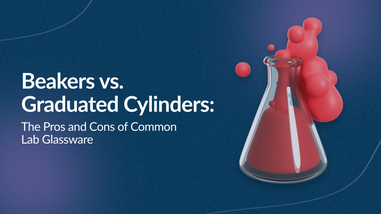- No products in the cart.
What is a Shaker?
A shaker is a machine typically used in laboratories that can blend, mix or agitate substances. This is done by putting a substance in a flask or tube and then the machine shakes them. These types of machines are typically used in biology and chemistry. Standard shakers are space saving with a small footprint. They also come equipped with adhering mats that allow items to sit while mixing with no attachments when placed on top.
How Does A Shaker Work?
A laboratory shaker typically works by creating a shaking motion. This occurs at low speeds of 25-500 rpm. An oscillating board is inside of the shaker that will hold the test tubes, flasks or beakers. These vessels, as well as the device, shakes to mix, blend or agitate the substances that are inside of the tubes. Laboratory shakers will condense two different processes into one substance. These shakers are a small, one stop product that is perfect for life science and molecular laboratories.

What is the Purpose of a Shaker?
The laboratory shakers are useful instruments that can form a homogenous mixture from multiple ingredients. Life sciences uses these shakers in waste water treatments, biotech industries and in life sciences. They are not just used in science labs either. Laboratory shakers can be used in many different industries. Examples of these include cosmetics, electronics, pharmaceuticals and in the food and beverage industries. These machines are an important part in many labs.
Features and Benefits of Using a Shaker
There are many different benefits and features to using a laboratory shaker. These include:
- Many laboratory shakers do not cause stalite vibrations on the benchtops in which they are held which will keep the other machines and processes in the area undisturbed.
- Shakers come in a compact design which is great when it comes to saving space inside of a laboratory.
- The footprint of many shakers is very small.
- These shakers can hold a variety of containers, such as test tubes, flasks, beakers and more.
- Many orbital shakers have maintenance-free brushless DC motors.
- Some shakers provide over speed detection and protection.
- Orbital shakers can be cold room and incubator compatible.
- There can be remote functions on shakers which can provide PC control and data transmission.
- Many shakers provide free software for PC control and data logging.
- Some shakers come with anti-slip platforms for culture flasks and straps in order to secure tubes.
- There are a wide range of platform options for flasks, culture flasks, etc.
Top Uses of a Shaker
There are many different uses that a shaker can do. These include:
- General mixing
- Diagnostic testing
- Cell cultures
- Bacterial suspensions
- Hybridization
- Solubility studies
- Staining
- Destaining
- Extraction procedures
- Washing procedures
Different Types of Shakers
Versatility is important when it comes to laboratory shakers. Because of this, there are many different kinds of shakers. The two that are most common are orbital shakers and plate shakers.
Orbital Shakers
An orbital shaker typically moves in a circular shaking motion at various speeds. These occur at low speeds of 25 up to 800 rpm. They are used for washing blots, general mixing and culturing microbes. An orbital shaker does not produce vibrations. It also will produce low heat, which other shakers do not. This makes it perfect for the process of culturing microbes. These types of laboratory shakers can be modified by placing it inside of an incubator. This, in turn, creates an incubator shaker because it will have low temperature and vibrations.
Plate Shakers
A plate shaker, also called a platform shaker, has a table board that will oscillate horizontally. The table board allows for beakers, jars and erlenmeyer flasks to be set on top of the table board. Liquids can also be put inside of small vials or test tubes and nested into holes that are on the plate. These types of machines can be modified just like the orbital shakers. Plate shakers can be combined with other machines such as a rotating mixer for small systems. They are designed to be built in laboratories themselves so that they can have an open source scientific machine.
What Type of Shaker Do I Need?
There are several different questions you should ask when you are looking into buying a laboratory shaker.
- What shaking method do you need?
- Do you need a temperature controlled shaker? One that is cooling, incubating or a water-bath shaker?
- What is the RPM range you need and what increments can the machine be controlled in?
- What is the capacity of the laboratory shaker that you are looking at? This includes the volume and the total weight.
- What programming functions does the shaker you are looking at have, if they have any?
- What accessories are available that go with the laboratory shaker?
Lab Pro offers a large variety of Vortex Mixers. For over 40 years, Lab Pro Inc. has been committed to delivering the highest quality chemicals, lab equipment, distance learning kits, lab supplies, and cleanroom PPE apparel to medical device companies and laboratories worldwide. To learn more, visit the biggest Lab Supply showroom in California, or contact us online or at 888-452-2776.












































